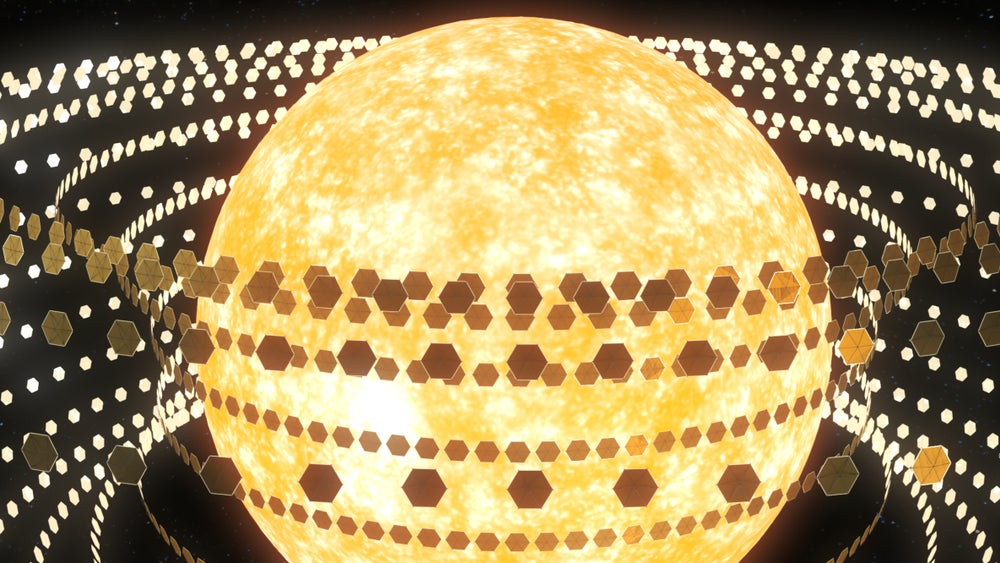Imagine building a power plant around the Sun – that is the basic idea behind a Dyson sphere, a hypothetical megastructure designed to capture the full energy output of a star.
First proposed in 1960 by physicist Freeman Dyson, the concept has lived mostly in the realm of science fiction. But over time, it has quietly earned attention from scientists, engineers, and futurists as a serious long-term solution to one of humanity’s most pressing challenges: the need for vast amounts of clean energy.
Obviously a true solid sphere wrapped around the Sun is physically impossible. No known material could support such a structure and gravity would tear it apart. The more realistic version is called a Dyson swarm. Instead of a single object, it would be made up of millions of solar-collecting satellites orbiting the Sun in a dense, coordinated cloud. Working together, these satellites would harvest a significant portion of the Sun’s energy and transmit it to where it is needed.
The power potential to meet the energy demand
Why would we ever build such a thing? Because the Sun produces more energy in a single second than humanity uses in an entire year. Right now, almost all of that energy escapes into space. Capturing even a small fraction of it would transform our relationship with power. We would no longer need to worry about carbon emissions, fuel supply, or fluctuations in the grid. The energy would be constant, clean, and abundant beyond anything we have today.
That would be revolutionary not just for climate and sustainability, but also for technology. AI, advanced computing, and large-scale data centres are already consuming more and more electricity. As these systems grow, they will demand energy on a scale we cannot currently provide. A Dyson swarm would remove that limit. It would allow us to train advanced AI, run massive simulations, and support technologies we can barely imagine today.
There is also the promise of space. A Dyson swarm would not just serve Earth. It would provide power for space-based industry, mining operations on asteroids, and permanent settlements beyond our planet. With such energy available, we could build an entire economy in orbit and begin to inhabit the rest of the solar system.
A colossal undertaking
We are not ready to build it yet. But we are starting to build the things that will make it possible. Engineers are developing prototypes for space-based solar power and launch costs are dropping. Meanwhile, robotics and autonomous systems are advancing quickly, and lightweight, radiation-resistant materials are becoming more practical. None of these technologies will build a Dyson swarm on their own, but together they form the foundation for future possibilities.

US Tariffs are shifting - will you react or anticipate?
Don’t let policy changes catch you off guard. Stay proactive with real-time data and expert analysis.
By GlobalDataThe full structure, if it is ever built, will likely take centuries. But the first pieces could be deployed within the next hundred years. Like the construction of cathedrals or transcontinental railroads, this is the kind of project that begins with a vision and takes shape slowly, across generations.
A Dyson sphere is not only about energy. It is about how we think. It challenges us to plan at the scale of a civilization rather than a single generation. It asks what kind of future we are trying to build, and whether we are willing to imagine a world of abundance rather than scarcity. It may take centuries to complete, but the mindset that makes it possible can start right now.








